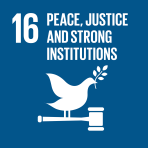The 2006 crisis in Timor-Leste: A brief backgrounder

- Автор: Peter Van der Auweraert
- Main Title: Ending the 2006 Internal Displacement Crisis in Timor-Leste , pp 13-19
- Дата публикации: декабря 2012
- DOI: https://doi.org/10.18356/0f94cb96-en
- Language: Английский
Right up until the start of the crisis in April 2006, Timor-Leste was widely lauded as a United Nations nation-building success story. Many commentators believed that, this time, the international community had gotten things largely right, not in the least by providing both the funds and the peacekeeping troops necessary for the United Nations Transitional Administration in East Timor (UNTAET) to fulfil its ambitious mandate of readying Timor-Leste for full independence. Soon, so it was thought, the ongoing political mission of the United Nations would give way to a much smaller United Nations office that would largely focus on developing a “sustainable development assistance framework” for the new country. United Nations peacekeepers had left the country in 2005, so when violence broke out in the capital city of Dili on 28 April 2006, security was entirely in the hands of the Timorese police and army, both of which would be at the heart of a political crisis that would threaten to rip the young nation apart. To situate the 2006 crisis, it is necessary to briefly go back in time and point out some key moments in Timor-Leste’s history.
© United Nations
ISBN (PDF):
9789210559188
Book DOI:
https://doi.org/10.18356/2891f2fb-en
Связанные Темы :
Migration
Sustainable Development Goals:
Countries:
Timor-Leste
-
From This Site
/content/books/9789210559188c004dcterms_title,dcterms_subject,pub_keyword-contentType:Journal -contentType:Contributor -contentType:Concept -contentType:Institution105
/content/books/9789210559188c004
dcterms_title,dcterms_subject,pub_keyword
-contentType:Journal -contentType:Contributor -contentType:Concept -contentType:Institution
10
5

